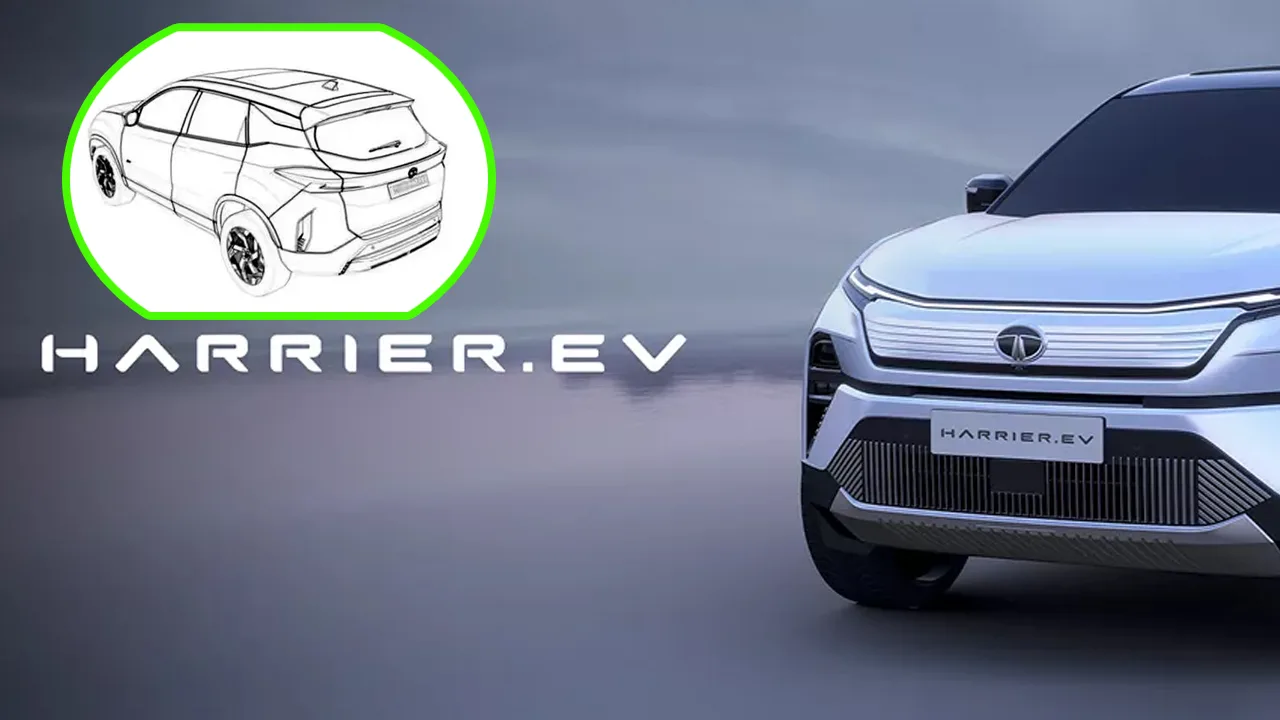In the ever-evolving landscape of electric vehicles, Tata Motors is calm to make a significant mark with the potential launch of the Harrier EV. This electric variant of the popular Harrier model promises to combine the strengths of Tata’s SUV legacy with the environmental benefits of electric mobility. We delve into the anticipated details of the upcoming Harrier EV, exploring its design, technological innovations, performance dynamics, and how it might reshape the electric vehicle market.
Upcoming Harrier EV Design Philosophy
The design of the Harrier EV is to build upon the acclaimed aesthetics of its predecessor, the Harrier SUV. Sleek lines, a bold grille, and a muscular stance have been defining features of Tata’s SUV lineup, and the Harrier EV is likely to maintain these elements. However, the electric variant might introduce subtle design tweaks to distinguish itself from the internal combustion engine models.
The incorporation of aerodynamic enhancements and a focus on reducing drag could be part of Tata’s strategy to optimize the electric vehicle’s efficiency and range. A distinct visual identity with eco-friendly design elements may set the Harrier EV apart in a competitive market.
Technological Advancements
Tata Motors is to leverage cutting-edge technology in the Harrier EV to deliver a seamless and futuristic driving experience. The formation of an advanced battery management system is crucial for optimizing the electric SUV’s range and performance. Speculations suggest that Tata may adopt state-of-the-art battery technology, possibly pushing the boundaries of energy density to offer an impressive range on a single charge.
Furthermore, the Harrier EV is to feature a comprehensive suite of clever connectivity options. From over-the-air updates to advanced infotainment systems, the vehicle might set new standards for in-car technology. Connectivity with mobile apps for remote monitoring and control could also be on the cards, enhancing the overall user experience.
Upcoming Harrier EV Performance Metrics
The performance dynamics of the Harrier EV are to redefine the driving experience associated with electric vehicles. While specific details on the powertrain are not available, it’s believed that Tata will focus on delivering a balance between power and efficiency. Instant torque characteristics of electric motors could translate to exhilarating acceleration, making the Harrier EV a compelling choice for enthusiasts.
Battery range and charging infrastructure compatibility are critical factors in the success of electric vehicles. Tata Motors may position the Harrier EV as a practical choice for daily commuting and long-distance travel, addressing range anxiety concerns. Fast-charging capabilities could be a key feature, allowing users to replenish the battery quickly during pitstops.
- Nearly 30% of UK Drivers Believe Car Tax Should Be Based on Mileage — Survey
- Why Planes and Boats Escaped the Luxury Tax But Cars Didn’t
- Australia’s Headlight Confusion: Authorities Warn Drivers After Viral $250 Headlight Rule Goes Wild Online
- 2025 Hyundai Venue Facelift Launched in India – Full Details, Variants, and Price
- Royal Enfield Bullet 650 Unveiled at EICMA 2025: A Classic Legend Returns
Market Positioning and Competitors
Understanding how the Harrier EV fits into the electric vehicle market is crucial. With a strong SUV lineage, Tata Motors may position the electric Harrier as a versatile option, appealing to those seeking performance and sustainability. Competitors in the electric SUV space will include offerings from established automakers, each vying for a share of the growing electric vehicle market.
Tata’s commitment to affordability and a reputation for robust engineering could play a pivotal role in positioning the Harrier EV against competitors. Marketing strategies, government incentives, and charging infrastructure partnerships will all contribute to shaping the electric SUV’s market presence.
Environmental Impact and Sustainability
The adoption of electric mobility signifies Tata Motors’ commitment to reducing the carbon footprint of its vehicles. The Harrier EV is to contribute to sustainability not only through zero tailpipe emissions but also in its manufacturing processes. The use of eco-friendly materials and a focus on recyclability could enhance the overall environmental credentials of the electric SUV.
Moreover, the life cycle analysis of the Harrier EV will be essential in evaluating its right impact on the environment. From raw material extraction to manufacturing, usage, and eventual disposal, Tata Motors may employ sustainable practices to ensure a positive environmental footprint.
Conclusion
As the automotive industry accelerates towards an electric future, the Tata Harrier EV emerges as a symbol of innovation and adaptability. From its potential design enhancements to the integration of cutting-edge technology and a commitment to sustainability, the electric Harrier represents Tata Motors’ foray into the evolving scenery of electric mobility.
As consumers eagerly await the official launch, the Tata Harrier EV has the potential not to get together. They exceed expectations, contributing to the broader narrative of electric vehicles shaping the future of transportation. Only time will tell if the electric e Harrier lives up to the hype. But one thing is definite – it has sparked a new chapter in Tata Motors’ journey towards a more sustainable and electrifying road ahead.
